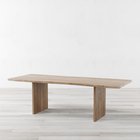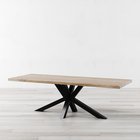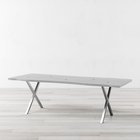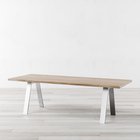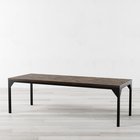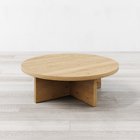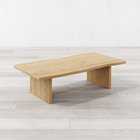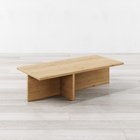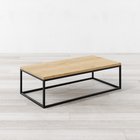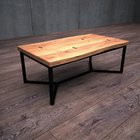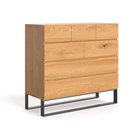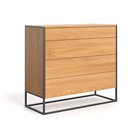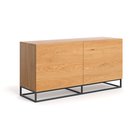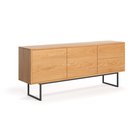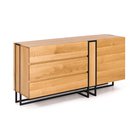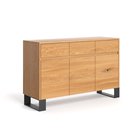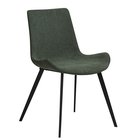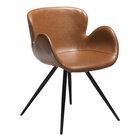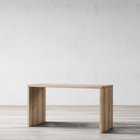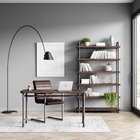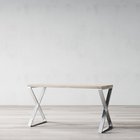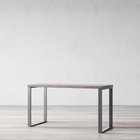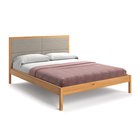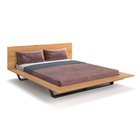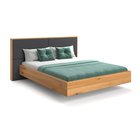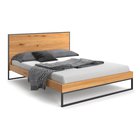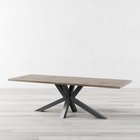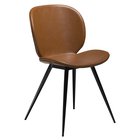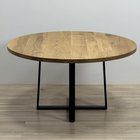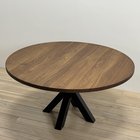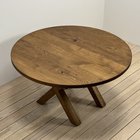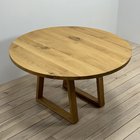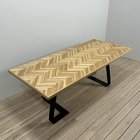Choosing the right wood for your bed frame is one of the most important decisions when selecting bedroom furniture, significantly impacting durability, style, and comfort. The type of wood not only dictates the bed base's aesthetic appeal but also its structural integrity and lifespan. Hardwoods like oak, maple, cherry, and walnut have distinct grain patterns and characteristics that influence strength, maintenance needs, and decor pairing.
Alternatively, softwoods like pine, cedar, and spruce offer lightweight, affordable accent woods best supported by sturdy joinery and blocking. This comprehensive guide delves into wood types, qualities, environmental considerations, and customization options to help find the best fit for your lifestyle and bedroom vision.
Understanding Different Types of Wood
Hardwoods vs. Softwoods
Common Hardwoods for Bed Frames
- Oak Beds: Known for their strength and durability, oak is a popular wood for bed frame. Its dense structure provides excellent support and longevity.
- Maple: Offers a unique grain pattern and is highly durable. Maple's light color can brighten a room and adapt to various finishes.
- Cherry: Cherished for its rich color that deepens over time, cherry wood brings warmth and elegance to bedroom decor.
- Walnut: Renowned for its strong, solid structure and beautiful dark color, walnut is a premium choice for a luxurious look.
Common Softwoods for Bed Frames
- Pine: A lighter option, known for its affordability and versatility. Pine is easy to work with and can be painted or stained to match any decor.
- Cedar: Offers a natural aroma and is resistant to decay. Its rustic appearance is ideal for a country or vintage-themed bedroom.
- Spruce: Lightweight yet strong, with a fine-grain texture. Spruce is a cost-effective option for a simple, modern look.
Characteristics of Each Wood Type
Every wood species presents signature markings ranging from rustic knots to wavy grains to colorful mineral streaks. These hallmarks, alongside shades from pale ash blondes to dark espresso hues, influence design style pairings. Some further nuances per type:
- Oak: Imparts substantial, reassuring warmth through bold grain patterns
- Maple: Offers a friendly glow emphasizing natural pastoral charm
- Cherry: Casts a refined, demure patina suited to antique farmhouse decors
- Walnut: Embodies exotic worldly depth mirroring traditional aristocratic mansions
- Pine: Channels breezy, carefree forest vibes aligned with casual lifestyles
- Cedar: Imparts aromatic, meditative tranquility complementing holistic wellness
- Spruce: Conveys airy durability and practicality fitting masculinely rustic spaces
Beyond visual traits, density, and oil content also dictate real-world structural capabilities over years carrying mattress weight loads. Thus furniture selection should harmonize delicate beauty balanced with resilient support longevity.
Factors to Consider When Choosing Wood
Durability and Strength
As a key functional requirement, wooden bed frames must provide robust structural integrity supporting average mattress/boxspring heft exceeding 100 pounds, along with enduring expected motions from regular use. Continuous gravity stresses plus retention against shifting forces demand durable build integrity for decades without loosening, warping or cracking. Thus, construction standards focus on dense mature hardwoods featuring tight wood grain patterns and minimal knotting wherever possible. These density characteristics become extremely important for suitable long-term performance.
Aesthetic Preferences
While meeting structural thresholds first, aesthetic visual qualities craft an atmosphere stirring emotions within bedrooms. The wood's intricate grain storytelling, luster clarity, and opulent hues all significantly influence style, from light and airy palettes to cozy warmth to rich decadence. Whether matching existing furniture suites or sparking new themes, consider finish pairing colors and sheens to create desired sensory impacts.
The Impact of Wood Finish on Bed Frames
Types of Finishes
Varnish, Lacquer, Oil, Wax: Whether using transmitter oils or surface protectants, transparent finishes enhance the elegant woodgrain while colored stains transform tones. Consider sheens, from matte to satin to glossy, reflecting lighting atmospherically across each finish:
- Penetrating Oils nourish depth fully while allowing grains to remain tactile
- Waxes seal vintage patinas for a mellow lived-in sensibility
- Painted Lacquers fully reinvent boldly dramatic perspectives
- Polyurethanes shield endlessly against abrasions
Effect on Appearance and Maintenance
The finish dramatically impacts aesthetics and care regimens. Glossy or colored coats may require gently cleaning surfaces using approved products and methods to avoid deterioration or foggy residues. Raw oiled woods age organically developing characterful hallmarks demanding slightly more frequent reapplication for continual nourishment. Evaluate lifestyle habits and expectations when selecting finishes aligned to properly caring over decades.
Choosing the Right Finish
Ideally finishes harness the natural wood essence to celebrate unique idyllic visions for cherished lifelong sanctuaries encouraging rejuvenation and comfort. Whether complementing heirloom antiques or pioneering new minimal forms, factor desired sheens, texture impressions, patinas, and upkeep obligations when selecting oak bed frame finishes.
Environmental Considerations
Sustainability of Different Wood Types
Promoting responsible forest stewardship prevents overlogging and damaging ecosystems. Seek out wood suppliers adhering to certifications from the Forest Stewardship Council (FSC) or Sustainable Forestry Initiative (SFI) denoting sustainable practices. Reclaimed antiques and handcrafted works stemming from small-shop artisans also minimize wood waste by repurposing rescued lumber.
Eco-Friendly Certifications
Credible green approval badges indicating environmentally-friendly harvesting and consummately custom building include:
- FSC (Forest Stewardship Council)
- SFI (Sustainable Forestry Initiative)
Supporting local woodworkers upholds small businesses while reducing transportation emissions. When shopping at larger retailers, ask about their eco-standards before purchasing.
Impact of Wood Sourcing
Global deforestation and illegal logging cause catastrophic biodiversity losses. Ensure woods originate from reputable managed forests or reclaimed sources. Responsible wood selection protects wildlife habitats and ecosystems for future generations.
Customization and Personalization Options
Custom Design Possibilities
Bespoke artisanal craftsmanship accessed through customization channels revels in cherishing rare woods salvaged from historic farms or river-reclaimed pre-colonial structures. One-of-a-kind rarities like curly maple, buckeye burl and old-growth pine root beds transcend into extraordinarily exclusive statement sculptures. For uniquely glamorous or rustically refined wood for bed base, personalized craftsmen collaborations tailor completely individualized visual poetry.
Adding Personal Touches
Even modest special requests like engraved initials transforming production models into sentimental heirlooms add a delightfully distinctive flair. Carved botanical motifs, inlaid stone/shell medallions, storage cubbies or charging docks also incorporate charming bespoke touches celebrating cherished interests.
Common Mistakes to Avoid
Overlooking the Weight of the Wood
While heavier woods like oak and walnut offer durability, their weight can be a practical concern, especially if you plan to move the bed frequently. Consider the weight and mobility of the wood when making your choice.
Ignoring the Size and Scale of the Bedroom
The size and scale of your bedroom should guide your choice of wood and bed frame design. A large, heavy oak bed base might overwhelm a small room, while a lighter, more delicate frame might be lost in a spacious place.
Compatibility with Mattresses
Ensure that the bed frame you choose is compatible with your mattress type and size. This compatibility is crucial for both aesthetic coherence and functional comfort.
Where to Buy and What to Look For
When searching for the best wood for bed frame, prioritize retailers and craftsmen known for their quality and craftsmanship. Research and read reviews to ensure you're buying from a reputable source. Pay close attention to the wood's quality and the craftsmanship of the bed frame sleeping platform. Look for smooth finishes, sturdy construction, and attention to detail, which are indicators of a well-made piece.
Weigh the pros and cons of online and in-store shopping. While online shopping offers convenience and a wider selection, in-store shopping allows you to see and feel the quality firsthand.

